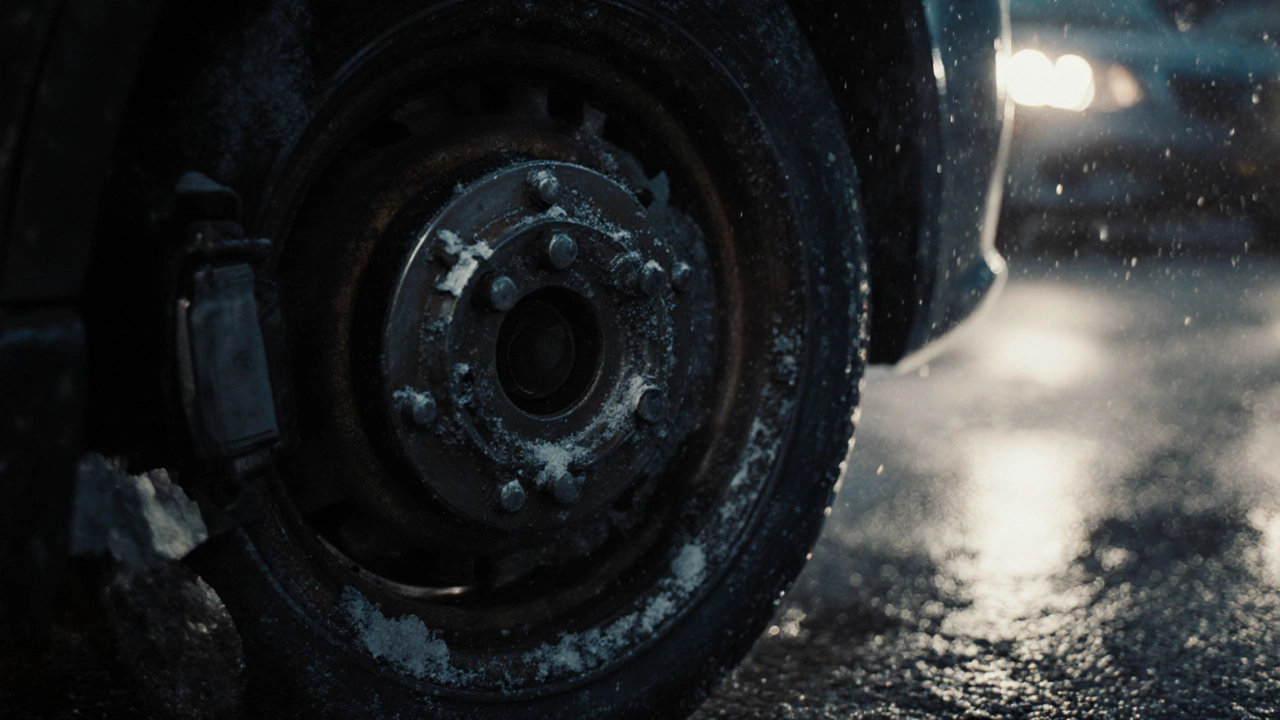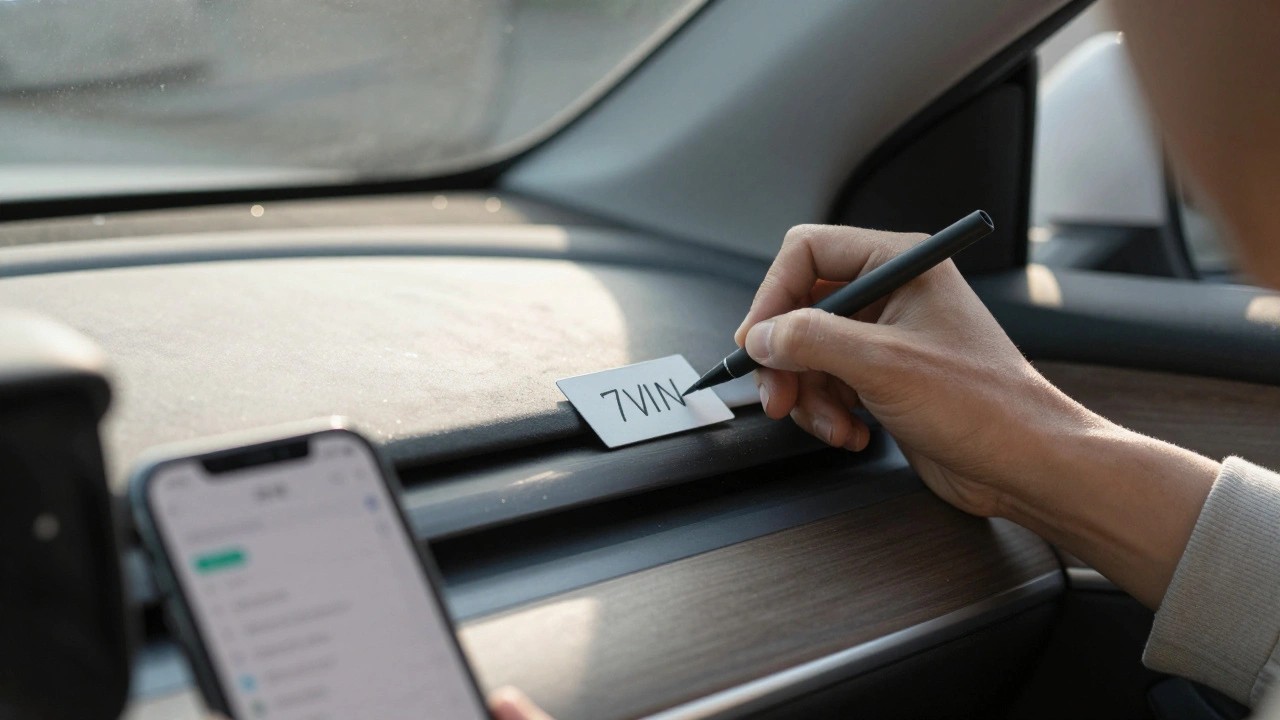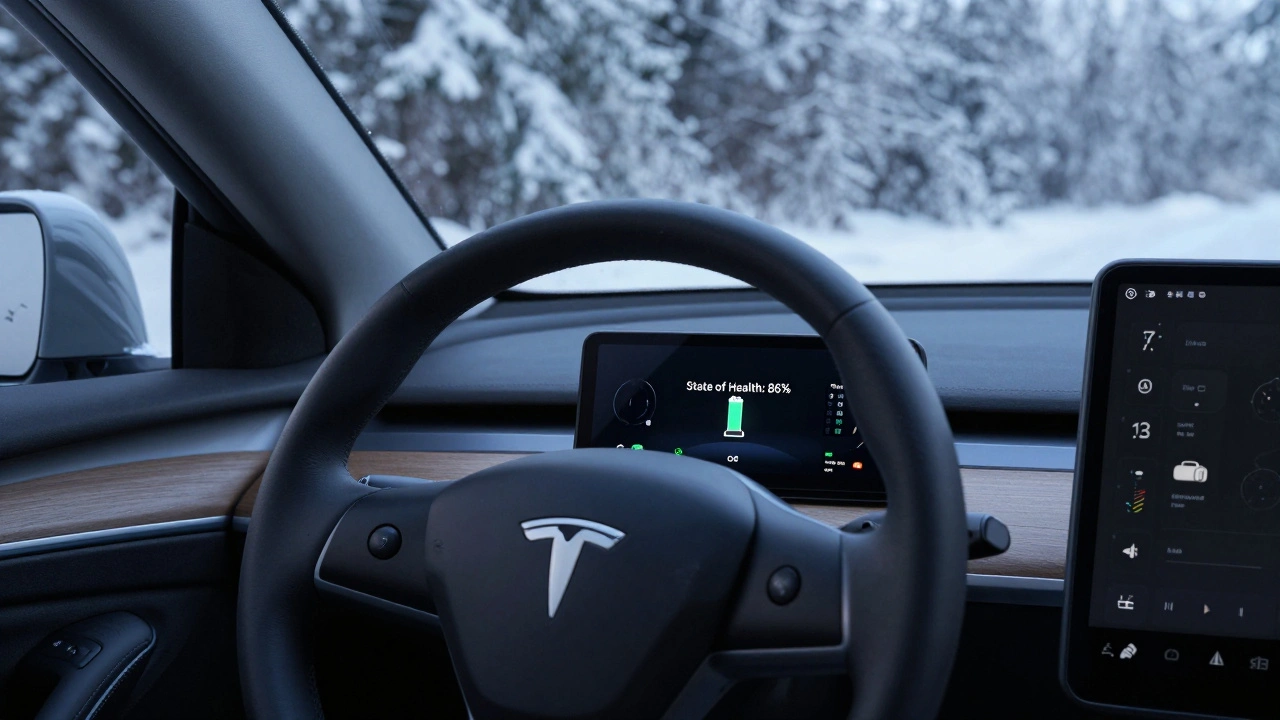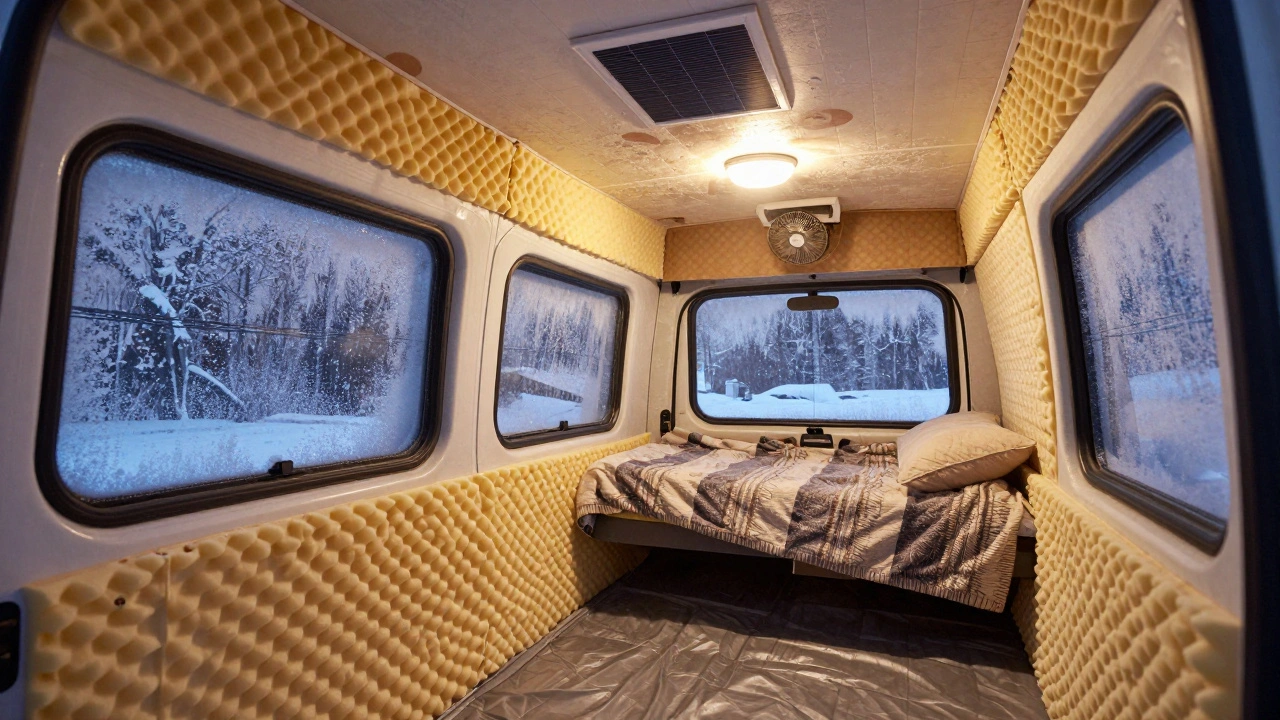If your ABS warning light suddenly pops on while driving, it’s not just a nuisance-it’s a signal that something in your brake system isn’t working right. And more often than not, the problem lies with your wheel speed sensors or the ABS module. These aren’t fancy gadgets you can ignore. They’re critical to your safety, especially in wet or icy conditions. Ignoring the light doesn’t make it go away. It just makes your car less safe.
What the ABS Warning Light Actually Means
The ABS (Anti-lock Braking System) warning light is not the same as your regular brake light. When it comes on, it doesn’t mean your brakes are worn out or low on fluid. It means the system that prevents your wheels from locking up during hard stops has detected a fault. This could be a broken wire, a dirty sensor, a failing module, or even a bad connection.
Modern cars have at least one wheel speed sensor per wheel. These sensors send real-time data to the ABS module about how fast each wheel is turning. If one wheel suddenly slows down while the others keep spinning-like when you hit a patch of ice-the ABS module kicks in and pulses the brakes to keep you in control. If the sensor stops sending reliable data, the system shuts down and turns on the warning light. That’s your car saying: “I can’t trust what I’m seeing. I’m disabling ABS.”
How Wheel Speed Sensors Work-and Why They Fail
Each wheel speed sensor is a small magnetic device mounted near the brake rotor or hub. As the teeth on the tone ring (a metal ring attached to the axle or hub) spin past the sensor, it generates a small electrical signal. The ABS module reads this signal like a heartbeat-steady, consistent, and predictable.
But these sensors live in a brutal environment: road salt, dirt, water, heat from the brakes, and constant vibration. Over time, they get clogged with metal shavings, rust builds up around the mounting point, or the wiring gets pinched or corroded. A sensor that’s just 1/16th of an inch out of position can throw off the signal enough to trigger the warning light.
Common signs of a failing wheel speed sensor:
- ABS light stays on after startup
- Speedometer acts up or flickers
- Traction control or stability control lights also turn on
- Brakes feel different-less responsive or more jerky during hard stops
One mechanic in Asheville told me he sees this exact issue every winter. Drivers come in after a snowstorm with the ABS light on. Nine times out of ten, it’s a sensor covered in slush and road grime. A quick cleaning and reseating fixes it. But if the sensor’s internal coil is cracked or the magnet is weak, cleaning won’t help. You need a replacement.
The ABS Module: The Brain Behind the Brakes
If the sensors are fine, the problem might be deeper: the ABS control module. This is the computer that processes all the sensor data and decides when and how hard to pulse each brake. It’s usually located near the master cylinder or under the hood, often in a metal box with lots of wires plugged in.
Unlike sensors, the ABS module doesn’t wear out from dirt or vibration. It fails because of electrical issues: overheating, voltage spikes from a bad alternator, water intrusion, or internal circuit board corrosion. Some models-like older Ford F-150s or certain Chrysler vehicles-are known for module failures around 100,000 miles.
Here’s the catch: a faulty ABS module doesn’t always throw a clear code. Sometimes it just sends inconsistent data, making the system think a sensor is bad when it’s not. That’s why mechanics often replace sensors first, only to find the problem returns. If the ABS light comes back after replacing sensors and checking wiring, the module is the next suspect.

Diagnosing the Problem: What a Real Mechanic Checks
Don’t just buy a sensor off Amazon and hope for the best. A proper diagnosis takes more than a code reader. Here’s what a qualified technician should do:
- Scan for ABS-specific trouble codes. Codes like C1101 (right front sensor circuit) or C1234 (module communication loss) point directly to the issue.
- Check the sensor’s signal with an oscilloscope. A good sensor shows a clean, consistent sine wave. A bad one looks jagged, spiky, or flat.
- Inspect the tone ring. If teeth are broken or covered in rust, the sensor can’t read properly-even if it’s new.
- Test wiring continuity and resistance. Corroded connectors or pinched wires cause intermittent faults.
- Verify voltage supply to the module. A weak battery or failing alternator can mimic module failure.
Many DIYers skip steps 2 and 3. They replace the sensor, the light goes off, and they think they’re done. But if the tone ring is damaged, the new sensor will fail again in weeks. That’s why you pay for expertise.
Replacement Costs and What You Should Expect
Wheel speed sensors cost between $50 and $150 each, depending on the car. Labor is usually $80 to $150 per sensor. If you’re replacing two or all four, the total can hit $500. But if the ABS module needs replacing, you’re looking at $800 to $1,800 for a new unit. Used modules from salvage yards can drop that to $300-$600, but they come with risk: no warranty, unknown history, and possible programming mismatches.
Some modules can be reprogrammed or repaired by specialists. Companies like BBA Remanufacturing or Module Experts can test, repair, and reflash your module for under $400. That’s often half the price of a new one. Ask your mechanic if they offer this service.
When You Can Drive Safely (and When You Can’t)
Here’s the good news: your regular brakes still work even when the ABS light is on. You can still stop the car normally. But without ABS, you risk wheel lockup on slippery surfaces. That means longer stopping distances and a higher chance of skidding.
If you’re driving in dry weather on familiar roads, you can get to a shop without panic. But if you’re heading into snow, rain, or mountain roads, don’t wait. Drive slowly, leave extra space, and avoid sudden stops. Your car isn’t broken-it’s just missing its safety net.

Prevention Tips to Avoid Future ABS Problems
- Get your brake system inspected every 15,000 miles. Ask the mechanic to check sensor clearance and tone ring condition.
- Don’t ignore wheel bearing noise. A worn bearing can throw off sensor alignment.
- Keep the wheel wells clean. After winter, rinse undercarriage to remove salt buildup.
- Replace sensors in pairs. If one fails, the other is close behind. Replacing both saves you a second trip.
- Use OEM or high-quality aftermarket sensors. Cheap ones fail faster and give inconsistent signals.
One driver in Hendersonville replaced her rear sensors with a $30 aftermarket pair. The ABS light came back in three months. She bought OEM sensors the second time. It’s been two years and no issues. The extra $70 saved her $400 in repeat repairs.
What to Do Next
If your ABS light is on, don’t panic. But don’t ignore it either. Write down when it came on-after a car wash? After hitting a pothole? After a long highway drive? That info helps a mechanic narrow it down.
Take your car to a shop that specializes in brake systems or has a good diagnostic scanner. Tell them the exact behavior: “The light comes on after 10 minutes of driving,” or “It only turns on when it’s raining.” Specific details lead to faster fixes.
And if you’re replacing sensors or the module yourself, take your time. Clean the mounting surface. Use anti-seize on the threads. Don’t force the connector. A bad connection is the most common reason for “new part, same problem.”
Can I drive my car if the ABS warning light is on?
Yes, you can drive, but your anti-lock brakes won’t work. Your regular brakes still function, so you can stop the car. But in wet, icy, or gravel conditions, your wheels may lock up during hard braking, increasing the risk of skidding. Drive carefully and get it checked as soon as possible.
Will replacing the ABS sensor fix the light every time?
Not always. Sometimes the problem is a damaged tone ring, corroded wiring, or a failing ABS module. If the light comes back after replacing the sensor, you need to check the wiring, the tone ring for broken teeth, and the module itself. A code reader alone won’t tell you the full story.
How do I know if my ABS module is bad?
If all sensors and wiring check out but the ABS light stays on, the module is likely the issue. Other signs include multiple warning lights (ABS, traction control, stability control), erratic brake behavior, or a code like U0121 (lost communication with ABS module). Testing the module requires specialized equipment and is best left to professionals.
Can a bad battery cause the ABS light to come on?
Yes. A weak or dying battery can cause voltage drops that confuse the ABS module. If your battery is over three years old or your headlights dim when starting, have the charging system tested. A simple battery replacement can sometimes clear the ABS light without any sensor work.
Is it cheaper to repair or replace the ABS module?
Repairing is almost always cheaper. A new ABS module can cost $1,200 or more. A rebuilt or repaired module from a specialist runs $300-$500 and often comes with a warranty. Many shops offer mail-in repair services. It’s worth asking if your mechanic can send the module out for testing and repair.
Final Thoughts
The ABS system isn’t just about avoiding skids-it’s about control. When your wheel speed sensors or module fail, you’re driving with one hand tied behind your back. The fix isn’t always expensive, but skipping the diagnosis is. Take the time to get it right. Your brakes are your most important safety system. Don’t gamble with them.






mark nine
November 26, 2025 AT 17:27Scott Perlman
November 27, 2025 AT 20:12Sandi Johnson
November 29, 2025 AT 11:57Eva Monhaut
November 29, 2025 AT 20:12Rakesh Kumar
November 30, 2025 AT 10:46Tony Smith
December 2, 2025 AT 00:00Karl Fisher
December 3, 2025 AT 15:55Buddy Faith
December 4, 2025 AT 12:44mark nine
December 6, 2025 AT 05:30Ronnie Kaye
December 7, 2025 AT 12:41Bill Castanier
December 8, 2025 AT 03:55Thabo mangena
December 9, 2025 AT 17:43